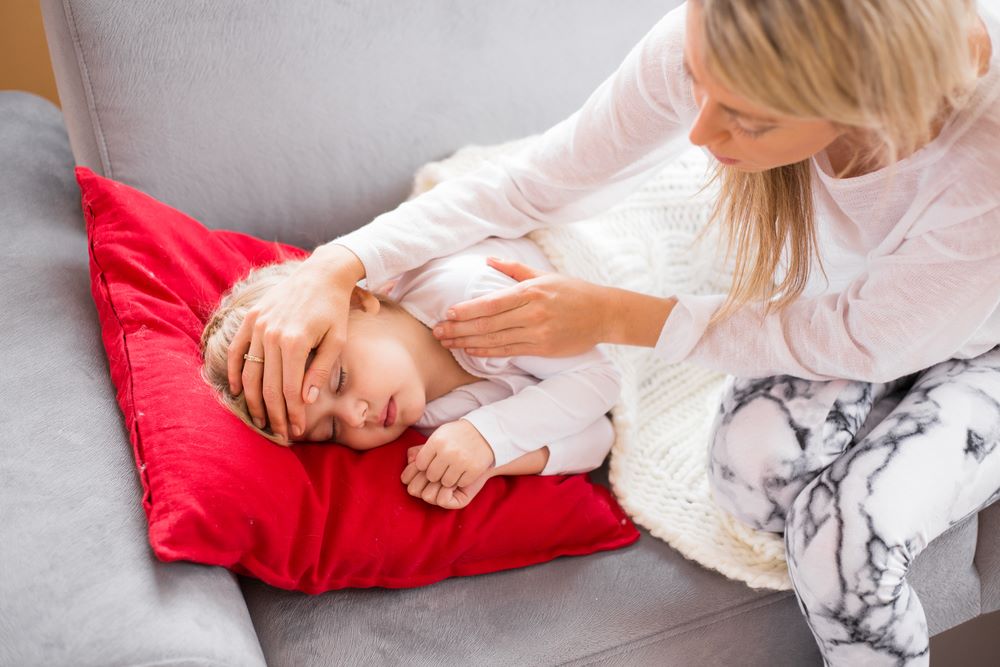A natural phenomenon
Fever is a rise in body temperature in response to a virus or infection.
The human being is a homeotherm, i. e. his core temperature remains stable regardless of the outside temperature. In a healthy child, it is regulated around 37°C (+- 1°C), and varies during the day from 0.5 to 0.6°C (circadian cycle). This thermoregulation is carried out at the level of the anterior hypothalamus, a true thermostat of the human body.
In the presence of an infection, this thermoregulatory centre will order an increase in temperature, through chemical substances called pyrogens, secreted by certain white blood cells (leukocytes and macrophages). A higher temperature will increase the speed of cell function and accelerate immune defence reactions.
We speak of fever when:
- For an infant under 3 months of age, the internal temperature exceeds 38°C
- For an older child, the internal temperature exceeds 38.5°C
Fever itself is therefore not dangerous, except for infants and as long as it does not exceed high values (~ 41°C).
So trying to lower it is not necessarily the best way to help a child heal. Thus, if he has a fever but does not feel sick, antipyretic medication is not mandatory. Improving your comfort may be enough.
In the presence of a mild virus, the fever episode will generally last less than 72 hours (3 days). Beyond that, however, it is essential to consult a doctor.
The right reflexes
Doctors advise parents not to cover the child, to make him/her drink as often as possible and to ventilate the room. “Moist cloths on the head can be useful because they promote the loss of body heat,” explains Professor Chantepie, President of the French Paediatric Society. “On the other hand, fresh baths are no longer relevant. It’s unpleasant for the little patient and the effectiveness doesn’t last,” he adds.
The drugs
There are three molecules available: paracetamol, aspirin and ibuprofen-type anti-inflammatory drugs. The first is probably the most commonly used in first intention. “The principle is to use only one drug. Alternate treatments are not recommended,” says Professor Treluyer, a pediatrician and pharmacologist at the University of Paris-Descartes. Finally, this specialist recommends that parents give preference to drugs that are easier to use and that are presented in a format that indicates the doses to be given to the baby according to his or her weight.
Is remote and continuous monitoring of fever possible?
Thanks to the Tucky patch thermometer, parents can monitor their children’s fever continuously and remotely. Placed under the armpit using hypoallergenic and biocompatible double-sided adhesives, Tucky will measure the axillary temperature (method used in maternity hospitals) and send the data to the parents’ phone without disturbing the sick child. A saving of time but above all serenity!

